The words liquor and liqueur derive from the Latin word lĭquŏr, “liquid substance”. Liqueurs are characterized by a minimum alcoholic gradation of 15° and a minimum 70gr to 100gr of sugar per liter, depending on the ingredients.
Liqueurs are obtained by mixing alcohol, water and sugar in variable proportions with ingredients like fruit, flowers, herbs, seeds, plants, roots and spices that release their aromas through the extractive properties of alcohol, this giving character to the liqueur.
In liqueurs the aromatic and saccharine element prevails; they can also be called “crème” when they have a minimum of 250gr of sugar per liter.
Bitters are those liqueurs in which the prevailing bitter taste is that of herbs; by tradition they are enjoyed mainly at the end of a meal.
Distilled spirits are liqueurs that lack any added sugars and aromas, except for those naturally extracted by their base ingredients.
It is possible to distinguish 4 methods for the production of liqueurs:
- Distillation: the aromas of the previously prepared infusion are steam-extracted through the appropriate alembics.
- Percolation: the aromas are extracted in liquid form by exposing the ingredients to the effect of hot water or alcohol, and subsequently separated from the solid part of the ingredients.
- Infusion: the fruit is immersed in alcohol for a variable period of a few months, then the obtained aromatic juice is mixed with water and sugar in the desired proportions, filtered, and bottled for sale.
- Tincture: herbs and spices are macerated separately for a long time in an alcoholic solution that extracts the aromatic part which is then mixed with water, alcohol and sugar in the desired proportion.
Liqueurs can either be aged or bottled right away for sale and consumption.

History of liqueurs
The history of liqueurs is tied to the discoveries on fermentation and distillation techniques throughout the centuries. The phenomena of fermentation and the resultant production of alcohol have been known for millennia and used in ancient times for the production of bread, wine and beer all over the world.
If the alembic (already used in rudimental forms by the Mesopotamian civilizations) and distillation techniques were perfected by the Arabs, alcohol started to be used for therapeutic goals in the Middle Ages and the following centuries: thanks to its extraction potential, liqueurs and healing elixirs were produced according to the period’s knowledge in horticulture, pharmacology and medicine.
From the 1700s on, liqueurs have been produced on a large scale and with increasingly advanced techniques, not only in the pharmaceutical field but also as aromatic commodities, commercialized for an ever growing market.
Today, thanks to the availability of all types of fruit, plants, spices and roots, a great variety of liqueurs is produced around the world: Nocino with the husk of green walnuts, Curaçao and Cointreau with orange peel, the German kümmel with cumin, Sambuca with star anise, Rosolio with rose petals, Amaretto with bitter almonds, Ratafià and Sherry with different varieties of cherries, Alkermes with cardamom, cinnamon, cloves and roses, Limoncello with lemon peel, Genepì with juniper, Mirto with myrtle; but there are also liqueurs made with honey, violets, chamomile, cocoa, eggs, coffee, licorice…
Many artisanal liqueurs are produced with ancient recipes kept in great secret as the heritage of their birth places’ gastronomic culture.
How do you drink a liqueur?
A liqueur can be enjoyed neat at room temperature, at fridge temperature, and with ice (keeping in mind that the cold reduces the tastebuds’ sensitivity).
Traditionally a liqueur like Limoncello is taken freezing cold, while other types of liqueurs can make a delighful warm punch if diluted with very hot water.
Liqueurs give character to a great variety of cocktails and drinks. The raising interest in mixology (the art of mixing liqueurs and other alcoholic beverages) has brought them to the spotlight: it’s impossible to replicate the most famous cocktails at home without a bottle of Cointreau, or Campari, or a Spritz without Aperol or better yet, our Aperitivo Fabbrizii!
Differenza tra liquori artigianali e industriali
Per chi vuole provare un’esperienza gustativa speciale, però, c’è ora un’alternativa artigianale ai liquori industriali da grande distribuzione:
- l’Amaro Fabbrizii che abbiamo riportato in produzione seguendo le indicazioni del nostro bisnonno Giovanni: da godere sia come aperitivo che digestivo, estratto solo da botaniche dei nostri Appennini, più la cascarilla delle Antille.
- l’Aperitivo Fabbrizii, anch’esso creato da Giovanni Fabbrizii partendo dall’infuso del suo famoso Amaro, ideale per mixare uno Spritz memorabile.
- il Limoncello di Santo Stefano, prodotto con i più profumati limoni della Riviera Ligure nel nostro piccolo liquorificio in Val d’Aveto.
- Il Gin Rusagni, il nostro blend a base di bacche di ginepro.





